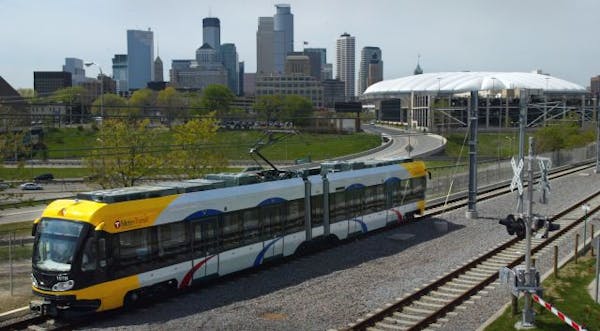Counterpoint
I am familiar with the area on the west side of Kenwood described in "Light rail will ruin a quiet area" (Dec 14). We lived on Penn for 13 years and have biked frequently on the path by the railroad tracks from downtown to the Chain of Lakes or out to Hopkins and beyond.
I agree with the author that "if the project is deemed vital to the economic future of our community, it should be done right." The Southwest Light Rail Transit project is indeed vital to our economic future because it adds a critical third leg to a system that may ultimately have four or five legs. We need a whole system in place to fully leverage the potential of the total investment.
Developers are much more likely to invest along the lines if they cover the entire metro area. People will be able to access the entire area without a car and over time we will dramatically reduce our urban sprawl and our carbon footprint. More and more people seem to want to live in compact, walkable communities.
I worry that the author's proposed solution to put the line below grade would kill the project because of the added cost. An essential part of the system would then be lost. A tunnel would be expensive, although maybe some kind of trench is feasible.
The author refers to a bygone era when there were more trains in the corridor. As the city is becoming more viable and dynamic now, after many postwar years of suburban flight, it is only natural that the established transportation corridors would become busier. We all have become used to the bucolic nature of the area, but it may not be able to stay this way and still be so close to downtown.
It is only natural that those who have benefitted from this situation would fight hard against change. But change we must. There are 3 million people in the metro area who must be served in different ways, not just the relatively small number of residents in this neighborhood.
I have biked alongside the Hiawatha LRT with its extra noise because it offered the most convenient and still safe way to get to the Midtown Greenway or the west side of the Mississippi. This same path is convenient for commuters who care mainly about getting to work, not accessing nature.
The same could happen to the Kenwood corridor, though it would still have much of its greenery. We would still have the Chain of Lakes greenery and access to more open country to the west. The noise level would definitely increase, but people who live in or close to a dense urban environment should expect more noise if the place is growing.
The "essential character of the area" is not meant to be fixed in time forever if there are far greater needs and opportunities.
The implementation of an entire LRT system is not only a look to the future, but ironically a return to our past when we had 500 miles of streetcar tracks from Stillwater to Excelsior. Think of how many people lived near the tracks and could access many places without a car (including my parents and older siblings).
It should be a top economic development and social equity priority to make this system happen.
* * *
John Crosby is a retired teacher in Minneapolis.

The little park that could … be better
Climate change looms large this election year
For this Minnesota legislator, action targeting child abuse is intensely personal


